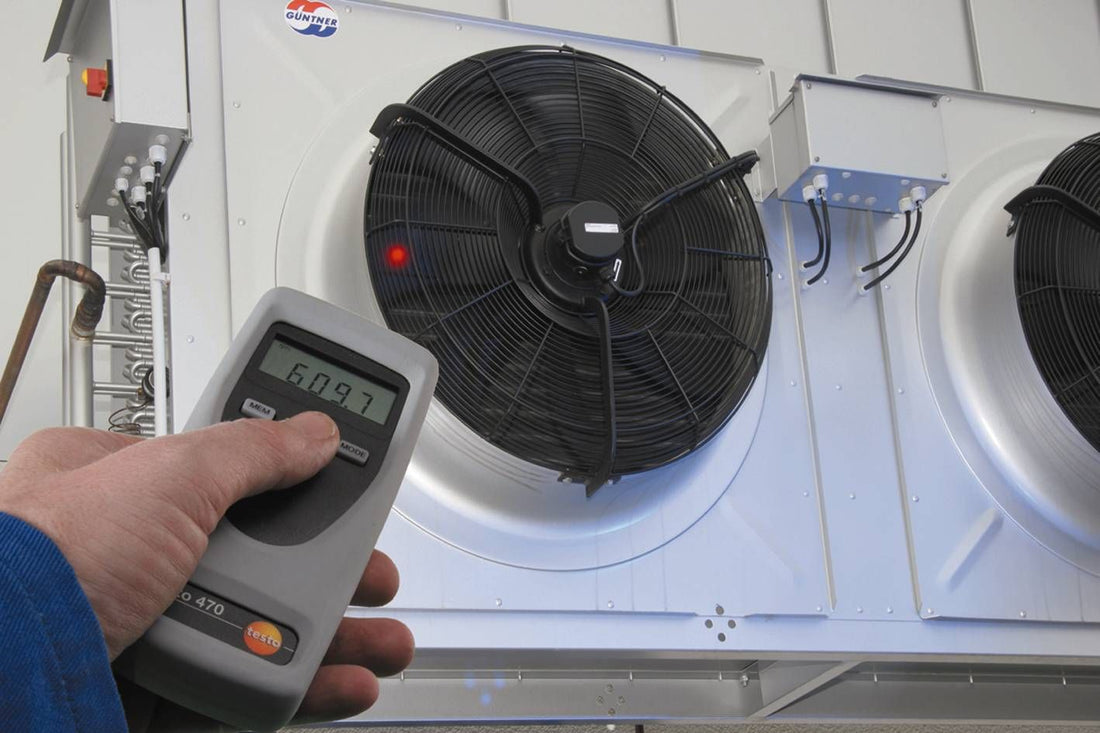
What is a Photo Tachometer and its Importance in Tech?
Share
In an era where precision and efficiency are paramount, understanding the tools that aid in achieving these goals becomes essential for tech professionals and enthusiasts alike. One such tool is the photo tachometer. But what is a photo tachometer? A photo tachometer is an advanced measuring instrument used to determine the rotational speed of an object, and it does so with remarkable accuracy.
Most commonly utilized in mechanical and electronic applications, this device employs light signals to gauge the speed of rotating objects. By capturing reflected light from the surface of the object in question, it calculates the number of revolutions per minute (RPM), thus providing crucial data for many industrial applications. Understanding the workings and benefits of a photo tachometer is vital for anyone working in tech-driven industries.

How Does a Photo Tachometer Work?
A photo tachometer operates on the principle of optical sensing. Unlike traditional tachometers that might employ mechanical methods to measure speed, the photo tachometer utilizes light detection as its main mechanism. When the rotating object reflects light, the tachometer counts the light pulses to calculate speed.
To further clarify, consider a rotating disk. When light hits it, some of the light will be reflected back towards the sensor in the photo tachometer. The device then measures the time interval between the reflections to compute RPM. The accuracy offered through this optical method sets the photo tachometer apart from other devices.
Applications of Photo Tachometers
Photo tachometers are widely used across various sectors, particularly in industries where accurate measurement of speed is crucial.
- Aerospace: In the aerospace sector, understanding the performance of engines and other rotating parts is critical. For instance, determining the speed of aircraft engines is essential for safety and efficiency, making photo tachometers invaluable.
- Manufacturing: In manufacturing, consistency in operational speed directly correlates with product quality. Photo tachometers offer precise speed measurements that help optimize production processes.
- Automobile: The automotive industry benefits from photo tachometers in tuning engines. Accurate speed measurement contributes to enhanced performance and vehicle safety.
- Research and Development (R&D): In various R&D projects, photo tachometers provide essential data that aids in experimental setups and innovations in technology.
Advantages of Using Photo Tachometers
The adoption of photo tachometers comes with several benefits, making them a preferred choice for speed measurement in various fields:
- High Accuracy: The optical sensing mechanism offers high precision compared to mechanical devices.
- No Contact Required: The non-contact nature of photo tachometers minimizes wear and tear, prolonging the life of both the tachometer and the equipment being measured.
- Wide Measuring Range: Photo tachometers can measure a broad range of rotational speeds, accommodating various applications.
- Ease of Use: Many modern photo tachometers come equipped with digital displays and user-friendly interfaces, making them accessible for tech professionals.
Limitations of Photo Tachometers
Despite their numerous advantages, it's crucial to consider some limitations of photo tachometers:
- Surface Reflection: The effectiveness of a photo tachometer can be affected by the surface of the rotating object. Highly reflective or poorly reflective surfaces can yield less accurate readings.
- Ambient Light Interference: Strong ambient light can affect the accuracy of measurements, necessitating controlled environments for optimal use.
- Cost: Advanced photo tachometers may come with a higher price tag compared to traditional tachometers, which may deter some users.
Choosing the Right Photo Tachometer
When selecting a photo tachometer, several factors should be taken into account:
- Measurement Range: Ensure the tachometer can measure the required RPM range for your specific application.
- Display Type: Opt for models that offer clear digital displays for easier readings.
- Portability: Depending on the usage scenario, consider whether the device is handheld or stationary.
- Data Logging: For advanced applications, look for photo tachometers with data logging features for tracking performance over time.
FAQs About Photo Tachometers
What is the main function of a photo tachometer?
The primary function of a photo tachometer is to measure the rotational speed of an object using light detection technology.
Are photo tachometers easy to use?
Yes, most modern photo tachometers are designed for ease of use, with intuitive interfaces and clear displays.
Can photo tachometers measure all surface types?
No, the effectiveness of photo tachometers can vary based on the surface reflectivity of the rotating object.

Conclusion
In conclusion, understanding what is a photo tachometer is essential for tech professionals and enthusiasts looking to improve their measurement capabilities. With the high accuracy, ease of use, and broad application range, photo tachometers represent an important advancement in speed measurement technology.
For more insights on related topics, check out our articles on what tachometers tell you, tachometer sensor locations, and tachometer technologies. These resources will deepen your knowledge of this critical instrument and its many applications in today's technology-driven world.
